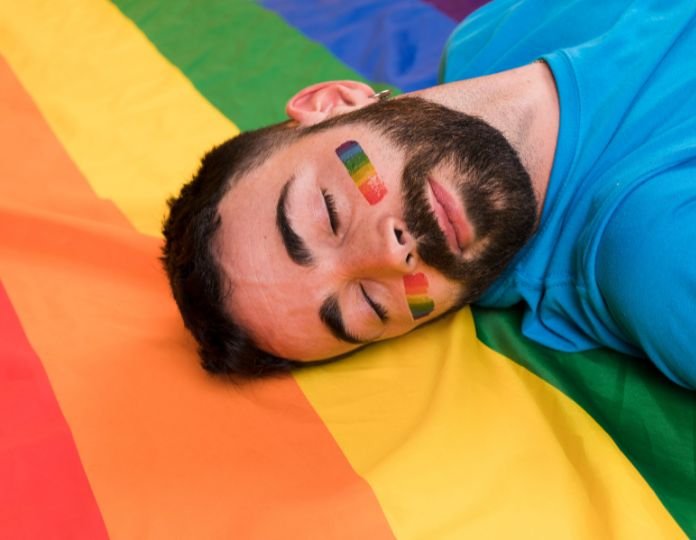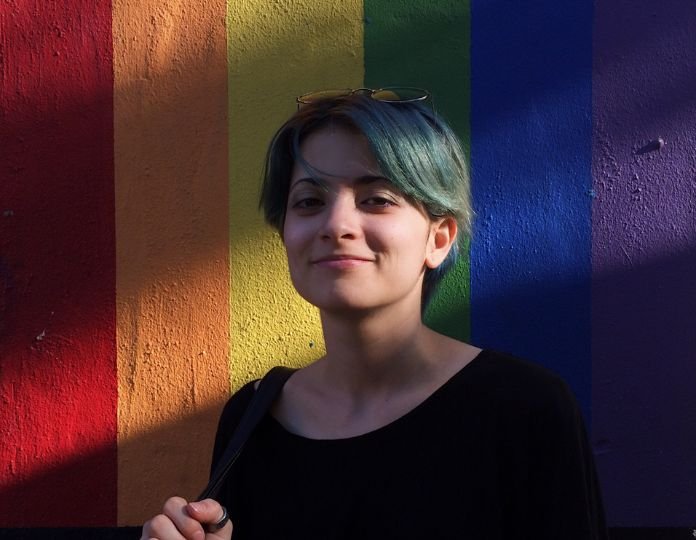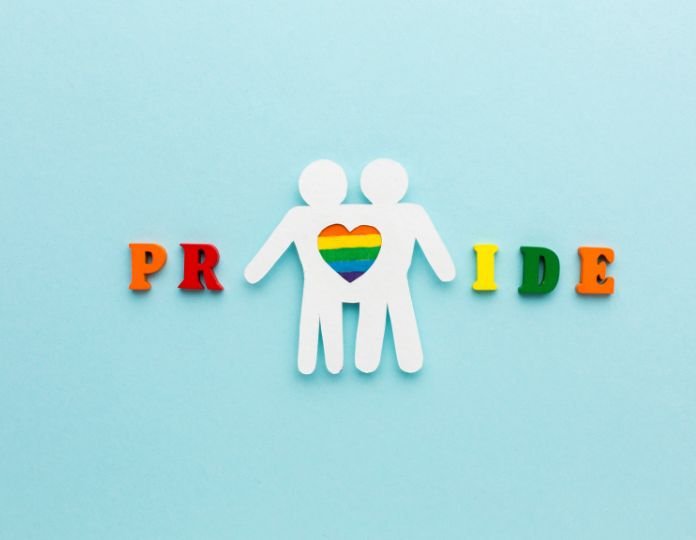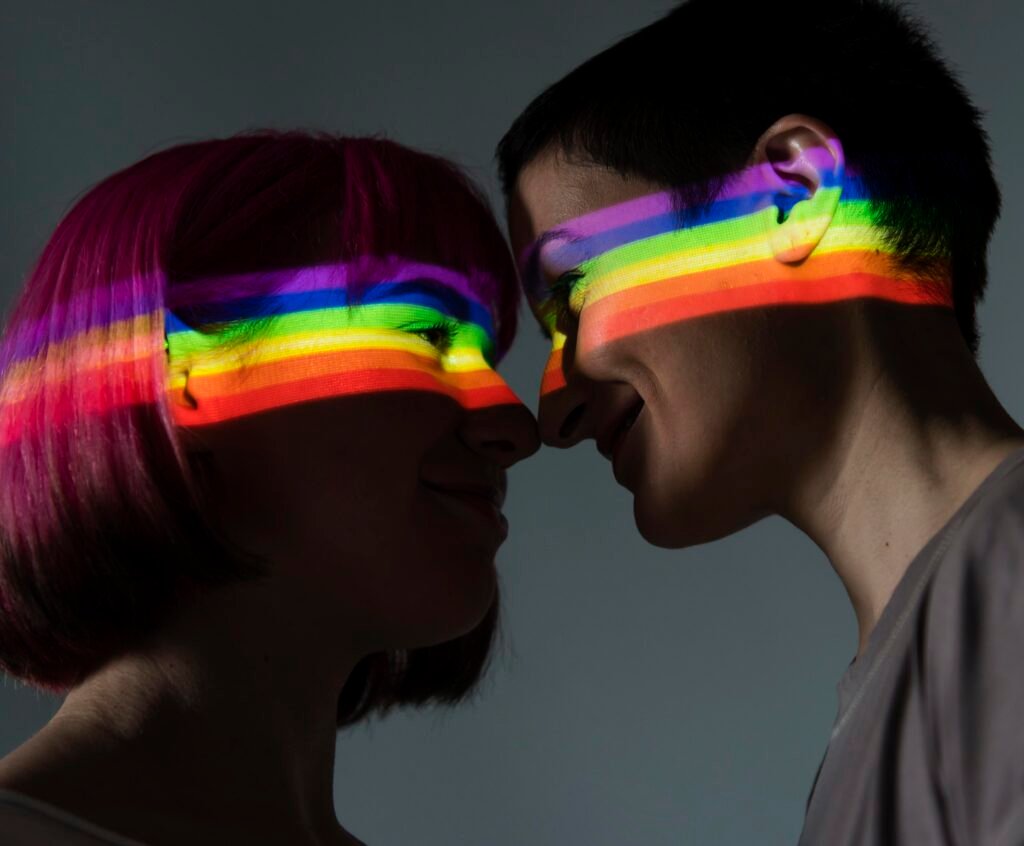“Equality means more than passing laws. The struggle is really won in the hearts and minds of the community, where it counts.”
This quote given by a prominent activist, Barbara Gittings, who worked towards the cause of acceptance of the queer community in America in the mid-20th century rightly elaborates that acceptance begins at the heart of people rather than in the amendments of the Constitution. The queer movement or the LGBTQIA+ movement aims at asserting rights, equality and dignity for people who do not identify within the gender and sexuality binary.
The queer community exists on a spectrum and rests on the principle of acceptance, equality and respect for all. The LGBTQIA+ stands for lesbian, gay, bisexual, transgender, queer, intersex, and asexual with the ‘+’ sign indicating the various identities that exist within and apart from the ones mentioned. The first pride parade can be traced back all the way to June of 1970 where the first marches took place in New York, Chicago and Los Angeles. The Indian Queer Movement is relatively young compared to other countries with the beginning point being in the 1990s. Before we go to the need and importance of acceptance, we must begin with awareness.
Various Identities That Fall Within The Gender And Sexuality Spectrum

While there are numerous identities since gender and sexuality exist on a spectrum and one label does not necessarily go for all, here we will be addressing some of them but it should be noted all identities, whether mentioned here or not, are valid and must be accepted.
- Agender acts as an umbrella term for those who do not wish to identify as any of the genders, or preferring to stay gender-neutral.
- Asexuals are those who experience little to no sexual attraction. Asexuality also exists on a spectrum and can thus range from someone feeling no sexual attraction whatsoever to feeling some form of minimal sexual attraction towards certain people or characteristics.
- Aromantics are those who experience little to no romantic attraction. This, again, rests on a spectrum.
- Bisexuals are those who feel attraction to at least two different genders. People falling under this term may be more attracted to one gender over another or be attracted equally to both.
- Demisexual is a term that falls within asexuality and refers to people who can only experience sexual attraction towards someone if they have a deep emotional connection with them.
- Gay refers to a man who experiences sexual/romantic attraction towards other men.
- Homosexual can be seen as more of a medical term to refer to those who feel sexual or romantic attraction towards those who belong to the same sex.
- Intersex refers to those who may have the biological parts of the two sexes (male and female) or the biological attributes that do not fit societal assumptions.
- Lesbian is the term used for those women who are romantically or sexually attracted to other women.
- Non-Binary is a gender identity that falls outside the societal binary of men and women. Any gender identity that does not align with these genders lies on the non-binary spectrum.
- Pansexuals are those who are attracted to more than three genders. This, again, rests on the spectrum.
- Transgenders are those who identify with a gender that was not assigned to them at birth.
- Queer is yet again an umbrella term which is used by people who are a part of the community but do not necessarily wish to identify as any label.
With the plethora of identities now, people have begun to feel more accepted and recognised. However, this does not mean that they do not face challenges regarding their queer identity. Let us acquaint ourselves with some of these.
Challenges Faced By Those In Queer Community
There are a multitude of challenges that people in the queer community have to go through in order to simply be accepted and not just by others but by themselves as well. Some of these are highlighted below.
Gender Dysphoria
Gender dysphoria is a term which is used to describe the unease felt by an individual when there is a discrepancy between their biological sex and gender identity. For example, if someone is a biological male but identifies as a woman, and if they are constantly referred to as a ‘he’, then it can lead to the individual feeling uneasy and uncomfortable leading to insecurities and confusion regarding their gender identity.
Read More; “Yes I am a Hijara but I am a human first”
Clinical Psychologist and Mental Health Expert, Saachi Arora says, “Subsequently the first thing is it’s very difficult for them to come to terms with their identity. Our identity is one of the most important aspects of ourselves, right? And then suddenly there is this, lack of acceptance that people face and it can come in the form of denial. That maybe this is not true. It comes in the form of, shock and disbelief that how is that possible? Because gender in our culture has been so binary, female or male, there is no in between. And there is no other gender other than that. That has become such a big norm and part of such a normality that, any other gender other than a male or a female kind of makes it very uncomfortable for people to get in touch with.”

She further explains her statement and puts that, “It is not because there’s something wrong with it. It is because it’s not aligning with the so called norm of our culture, which is only very much associated with male or female. There is no left or right. There is no other way. So I think that lack of acceptance comes in there where they don’t see themselves to be a part of the norm or, you know, they don’t see themselves to be a part of the So called normal culture.”
Exclusion by Peers/Family
Exclusion by Peers/Family is a common occurrence by many who are able to come out. People seem to believe that those who exist beyond the binary of gender and sex have some sort of illness. This leads to them being attacked by slurs and social exclusions even from those closest to them.
As per Saachi Arora, “Your child can just feel like they’re no longer a part of the society. And of course, after comes the second step, fear. There’s lack of acceptance – for sure. But, even if they eventually come to terms with it through acceptance. They are scared of opening up. The fear of coming out is becoming a very important concern. They think “how to come out to parents?”, “how to come out to families?”, “will they accept me?”, “will they not accept me?”. Because it took them only so long to accept themselves that they say, “how can you know anything, if I will be accepted from parents?” The fear of coming out can be a big problem in itself.”
If we look back at the caste system and the practice of untouchability, we can find certain parallels here including the fear that mere illusion of association with a certain group could result in someone’s reputation being tainted. Research conducted in US schools has indicated that 86.7% of assigned males at birth who identify as non-binary tend to be bullied the most.
Read More: Advocating and Understanding LGBT(QAI+) Mental Health
Saachi says, “Marginalization can be the right word. when the person comes to know about them as being gay/lesbian, they feel very marginalized. As if they have been cornered in society. That you will come last, the males and females will come first. Like there are three friends in a room, two people are talking and the third friend feels marginalized or cornered because he/she feels they are different or are treated like so. The feeling of being cornered also is something to emphasize, that they generally feel that the entire society has sort of made them a part of the margin, they’re not a part of the whole.”

Restrictions by the Government
Restrictions by the Government perhaps most severely guides the living conditions of the queer youth. Could you imagine a life with your significant other if you weren’t even allowed to marry each other? Moreover, the Supreme Court has released a mandate which dictates any live-in couple to declare themselves as such legally, the denial of which will lead to legal action. Queer couples for some time now have lived out their lives in secret by living together. However, this new mandate will require them to openly announce themselves which might very well make them a target.
Moreover, the most recent hearing on the legalization of same-sex marriages has yet again led to disappointing results wherein the Supreme Court has passed the judgment that while homosexuals exist and their existence is valid, granting them marital rights would lead to destruction of Indian society. Even though the Transgender Persons Act of 2019 makes it a government mandate to get gender-affirmative medical services, twisted bureaucratic processes make it very difficult to get access to such services.
Usage of Dead Names and Incorrect Pronouns
Usage of Dead Names and Incorrect Pronouns is one of the more passive aggressive ways of discriminating against people who do not conform to heteronormative standards. Dead name is the name that a queer person held before transitioning or embracing their gender identity. Similarly, preferred pronouns are the ones that an individual wishes to be referred to as by other people. Studies have proven that the mere use of chosen names and preferred pronouns can drastically reduce depressive thoughts and suicidal ideation.
Read More: LGBTQ+ Community, issues and prejudices faced by them
Need For Different Sex Education For Heterosexuals and Queer
Need For Different Sex Education For Heterosexuals and Queer is often not talked about. Sex education is much different for queer youth than it is for heterosexual people. While certain aspects such as consent remain the same, other aspects must be given special attention. In general, the need for sex education amongst youth should be an utmost requirement. However, we run into a lot of trouble when we pool in queer sex education with heterosexuals. Things such as STIs, hygiene, respect for the partner’s gender identity and so on are essential to cover for the youth. Moreover, for trans youth, they must keep in mind the effects and the stage of hormonal therapy they are at before proceeding with any form of sexual activity.

Fear Of Being Targeted
Even after knowing themselves and embracing their identity in secret, many fear that publicly announcing or outing themselves can cause them to become a target to social exclusion as well as aggressive crimes.
Abusive Household, Homophobic Parents and Growing Up Queer
Hitting, yelling, cursing are all different forms of abuse. Abusive households practically hold a degree in these. Statistics dictate that approximately 90% of Indian youth have experienced some form of abuse before reaching age 18. Abusive households are those where there is some form of abuse, either by parents towards the child, between the parents or couple or intergenerational practices of abuse that have persisted throughout time. While growing up surrounded by abuse is not an ideal scenario for any child and can lead to detrimental impacts, the scars of which remain within the person throughout life, we must focus on how exactly this affects queer children.
“Family conflicts are bound to happen unless and until we belong to a very open minded family. So there is a lot of fear. There is a lot of lack of acceptance. And to be very practical here, there are issues at the career and the professional level also. Like, one would be lying if they say that we have advanced in our cultures and now there is no problem.”, puts Mental Health expert Saachi.
Parents As The Abusers
Study conducted amongst LGBTQ+ youth in the UK has revealed that the most common source of abuse towards queer children growing up comes from their parents, with 45% claiming it to be their mother and 41% claiming it to be their father. For a child taking their first step into the world, parents become the idea that one looks up to. Erik Erikson, who gave the stages of psychosocial development, as well as Jean Piaget, the famous Swiss psychologist who gave the stages of cognitive development for children, both talked about how children initially begin discriminating between good and bad according to their parents rules and behaviors.
Read More: What Can Be The Impact Of Child Abuse On The Mental Health Of The Child?
Child abuse comes in various forms be it psychological, physical, sexual or emotional. It can be either overt, that is outwardly, or covert, which is a much more subtle form of it. Overt abuse could be physically harming or sexually abusing the child. There have been cases of attempted castrations of younger queer males by the hands of their parents. Research has indicated that male homosexuals tend to have a poorer relationship with their fathers than male heterosexuals simply because the former is seen as a disappointment.
Read more: Why Are People Homophobic?
Homophobic Parents
When parents refuse to accept you for who you are, how can you expect anyone else to? Homophobic or transphobic parents tend to continuously impose heteronormative standards on their children which usually leads them to develop gender dysphoria and constantly be uncomfortable with people they like or how they feel. A lot of queer children growing up in such a background tend to internalize oppression and homophobia. Internalised homophobia is essentially when a queer person is homophobic of themselves. This can cause extreme personality conflict, rage, guilt, confusion and frustration within the person.
Read more: Discussing Discrimination Through Mental Health Lens
Survey conducted on the queer youth in the UK indicates that 43% trans and non-binary people tend to experience more abuse by their families than other family members. Trans youth and homosexuals, in particular, are often sent to conversion camps which reinforce the idea that being queer is ‘not natural’.
Common Phrases Used To Invalidate Identities
“This is all just in your head”, “it’s just a phase”, “it is all a part of growing up, it will get better”, “this is simply not natural”. There are certain sets of phrases that families, especially parents or guardians, use when their ward comes out to them. These all aim towards invalidating the individual’s identity and guiding them to ‘the right path’. All of these propagate the same idea that being queer is a choice, something that can be changed, when in actuality, it is something we are all born with. Scholars have also pointed out that gender and sexuality are fluid and thus, no identity is static even when someone is cis-het.
Acceptance
Love, care and acceptance. It is something that we all crave deeply. It is innate to being human. However, this is the very thing most queer youth are stripped off from their families. Simply accepting and trying to understand your child’s gender identity and sexuality can go a long way. It can help connect you more to your child in such a way that they feel more comfortable opening up to you, sharing their thoughts and feelings so you can navigate the hurdles together. One of the ways to do this is to raise children in a gender-neutral environment which we will further elaborate on below.
According to Clinical Psychologist and Mental Health Expert Ashima Mahajan, “While coming out of the closet is not easy for the child, it might also be difficult for the parents to accept it in some cases. To best help the child, it’s important for the parents to help themselves too while handling this news. They might be in the process of grieving a gender role that they thought was assigned to the child by them, the culture and the society all these years. Show some compassion to yourself along with showing love to your child who made the disclosure. If possible, be in therapy or join support groups to help yourself navigate through your fears and apprehensions, thereby gradually accepting this change in their lives.”
Navigating a Gender-Neutral Society
Gender is a social construction. One can only understand the depth of the difference between sex and gender when they break down ‘gender’ in its simplest form. What makes an individual a ‘girl’ or a ‘boy’? Is it not merely the societal roles that we have burdened these terms with? A social construction refers to something that does not actually exist in reality but has come to be developed by societal and cultural norms.
- Gender Socialization begins early on. During baby showers, we already begin assigning ‘girly’ things such as the color pink in the hopes of a girl child and ‘boyish’ things such as the color blue for a boy. How can a color depict a gender? The major gender socializing entities are family, friends, educational setting and media sources. Throughout a child’s development, they are burdened with many ‘gender-specific’ rituals and ways of life, the upbringing in the binary world is different for both. Girls are taught to be well-mannered and quiet while boys are encouraged to be loud, assertive and confident.
- Gender Stereotypes and its harmful impacts are so inherent and vast that they deserve their own article! Gender socialization comes with imposing gender stereotypes on individuals. It traps the individual in a small box simply based on their ‘gender’. This does not allow them to grow and flourish. Gender stereotypes exist in all spheres of life, from dictating which career path would be suitable to emotions that one can express fully.
- Raising Children without Gender Norms enforced on them would be a new approach to avoid gender socialization and let individuals explore and embrace their gender identity on their own. Moreover, rather than focusing on traits that are ‘suitable’ for a particular gender, we could narrow down traits that are universally accepted and promoted. Gender-neutral parenting also empowers children to be confident, comfortable and creative as research has suggested.
- Is There A Need to Come Out? When we begin viewing gender as a social construct, we might also wonder if there is truly a requirement to announce when one is queer. Straight people never have to come out as straight, they are just assumed to be, such assumptions propagate a heteronormative ideal. Moreover, many people believe that they are owed some sort of explanation if someone they are close to comes out as queer. This all contributes to the notion that being queer is something out of the ordinary and thus, must be announced or made clear.
Read More: Understanding Gender and Sexuality in Psychology
Situation Of Queer Youth In Current India
A study published in 2023 has yielded horrifying results. The study analysed 135 cases of suicides among queer youth in India over the span of 10 years and have found that the most common factor associated with this crisis was social stigma. Each day, more and more queer suicides are being reported. Reasons have been attributed to various psychosocial aspects as research has suggested. Seeing these results, what must be the condition of queer youth in India?
According to Saachi, “It doesn’t stop at the struggle with the self. The struggle just goes on. And the only solution to this is, as the society can, as a society, if we can expand our vision and be more accepting of things that are beyond the norm as such believing, it’ll be easier for people to be more accepting.”
Given the constantly disappointing verdicts dictated by the government, this is not a surprise. Up until 2018, homosexuality was a crime that was a punishable offense and had a life sentence. This has led to the emergence of learned helplessness in the majority of the queer youth of India. Learned helplessness is a phenomena in psychology given by Martin Seligman, the father of positive psychology, which holds that when aversive conditions are continued for a while, organisms tend to stop employing escape or avoidance strategies and accept conditions as they are believing themselves to be ‘helpless’ in changing them.
Commenting on this, Saachi expresses that “Even at jobs, recruiters and employers wouldn’t want to or would be reluctant to employ someone from the community. That is very sad and stagnance is something. So, It’s about, there are a lot of things, it starts with the struggle with the self of not being able to accept oneself, then it goes on to fearing what will other people say, what will other people think, and then it goes on to, limiting opportunities in life which comes with it.”

After the recent ruling where queer youth has yet again faced defeat from the government, this form of learned helplessness can be seen as emerging in certain activist groups. However, resilience must overpower as some people are continuing to move forward with their efforts in securing equality with a much stronger force than before.
Queer youth is also subjected to a lot of discrimination, verbal and physical, which can have detrimental impacts on an individual’s psychological health. A research published in 2022 has also shown that lesbians and queer ‘women’ in particular face more discrimination in India due to the existing patriarchal system. Moreover, there have been rape cases where the perpetrators have taken the stand that an individual is only a ‘lesbian’ because they have not experienced a ‘man’s touch’.
Slurs are part of such discriminatory behavior and perhaps the most common form of it. Derogatory terms towards queers are used in such nonchalant ways that many do not even realize that these are harmful. The lack of agency worsens this problem as many cases go unreported due to the fear of facing similar treatment from law enforcement officers. Most gay-rights activists prefer to call themselves ‘humanitarian rights activists’ as one of the efforts to bridge this gap of heterosexuality and homosexuality making both seem on par while highlighting that queers are also humans and not their own species. Perhaps most violence would stop with this basic understanding.
References +
- Website, N. (2024, March 13). Gender dysphoria. nhs.uk. https://www.nhs.uk/conditions/gender-dysphoria/
- Gower, A. L., Rider, G. N., McMorris, B. J., & Eisenberg, M. E. (2018). Bullying Victimization among LGBTQ Youth: Critical issues and future directions. Current Sexual Health Reports, 10(4), 246–254. https://doi.org/10.1007/s11930-018-0169-y
- Jain, D. (2022). Right to Health and Gender-Affirmative Procedure in the Transgender Persons Act 2019 in India. Indian Journal of Plastic Surgery, 55(02), 205–210. https://doi.org/10.1055/s-0042-1749137
- OITE Blog – NIH office of Intramural Research | Understanding the Impact of Misgendering and Deadnaming. (2023, July 31). https://oitecareersblog.od.nih.gov/2023/07/31/understanding-the-impact-of-misgendering-and-deadnaming
- Libretexts. (2023, March 3). 5.7: Social Construction of gender. Social Sci LibreTexts. https://socialsci.libretexts.org/Bookshelves/Gender_Studies/Sexuality_the_Self_and_Society_(Ruhman_Bowman_Jackson_Lushtak_Newman_and_Sunder)/05%3A_Gender_Identity_Gender_Roles_and_Gender_Differences/5.07%3A_Social_Construction_of_Gender
- The benefits of Gender-Inclusive Parenting. (n.d.). https://www.ulc.org/ulc-blog/the-benefits-of-gender-inclusive-parenting
- Kar, S. K., Menon, V., Mukherjee, S., Bascarane, S., Sharma, G., Pattnaik, J. I., Ransing, R., Padhy, S. K., & Agarwal, V. (2021). Suicide reporting of LGBTQI+ population in India: An analysis of online media reports of the past decade. Journal of Public Health (Print), 45(1), e95–e103. https://doi.org/10.1093/pubmed/fdab378
- Seligman, M. E. P., & Maier, S. F. (1967). Failure to escape traumatic shock. Journal of Experimental Psychology, 74(1), 1–9. https://doi.org/10.1037/h0024514
- Arora, L., Bhujang, P. M., & Sivakami, M. (2022). Understanding discrimination against LGBTQIA+ patients in Indian hospitals using a human rights perspective: an exploratory qualitative study. Sexual and Reproductive Health Matters, 29(2). https://doi.org/10.1080/26410397.2022.2104678
- Harry, J. (1989). Parental physical abuse and sexual orientation in males. Archives of Sexual Behavior, 18(3), 251–261. https://doi.org/10.1007/bf01543199













Leave feedback about this